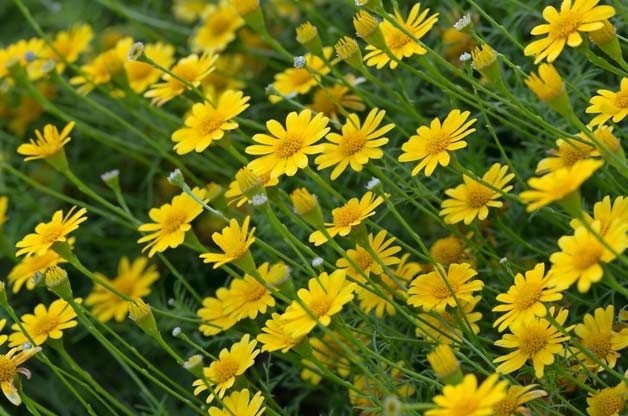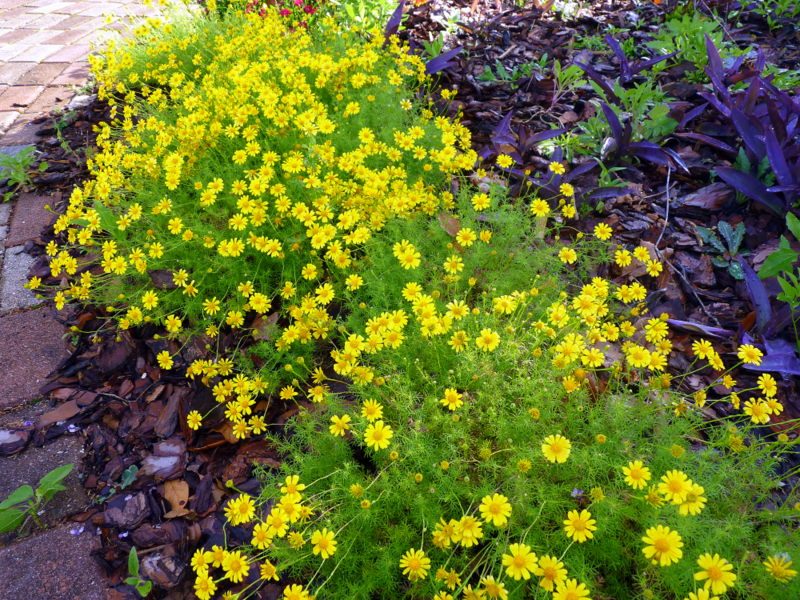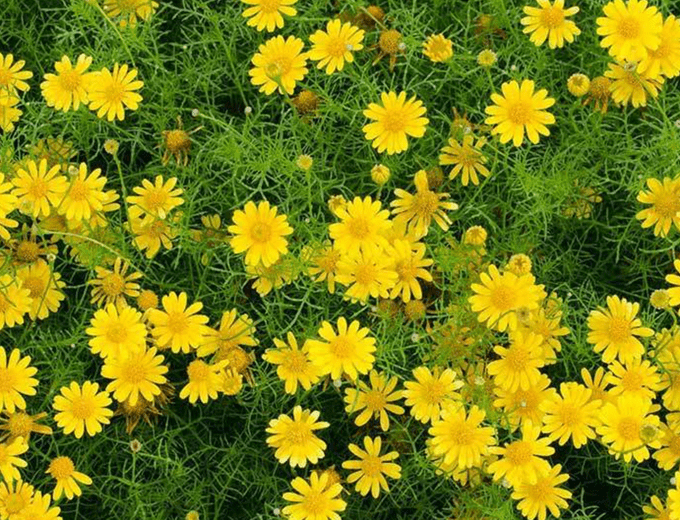Dahlberg Daisies Brighten Up Dry, Sunny Gardens
Updated: Aug. 23, 2022
Dahlberg daisy plants have feathery foliage and yellow blooms. These drought tolerant, heat tolerant flowering plants attract butterflies.
How to Grow Dahlberg Daisy Plants

A few years ago, I came upon some Dahlberg daisy plants (Thymophylla tenuiloba) at my local nursery, and fell in love with their feathery foliage and cheerful yellow flowers. I planted them as a border in my sunny front yard. They did very well until Florida’s wet summer weather set in, and they all died back.
It wasn’t the end of these perky little plants, though. Each spring, after a bit of winter rain, Dahlberg daisy seedlings pop up around my front yard. They thrive with absolutely no attention from me at all until summer sets in once again.
Check out the top 15 drought-tolerant plants that can handle dry weather.

Dahlberg daisy is native to south Texas and northern Mexico. As a result, they love hot, dry conditions, and don’t much enjoy extended high humidity or overly wet soils. Plant them in dry, well-drained soil and give them lots of sunshine. Once established, they’ll thrive for weeks on end without much rain. They’re not tolerant of frost or freezes. They are hardy in zones 9-11, or treat them as an annual.
Start them inside in spring (you can buy seed seeds online) and transplant outdoors once winter has finally given up in your area. This low-growing, spreading plant looks best along borders or in hanging baskets, where folks can get up close to appreciate the little blooms and fragrant feathery foliage. Some butterflies even use these flowers for nectar. You might try them as edging plants in a sunny butterfly garden.
Psst—drought-tolerant blackfoot daisy can also take the heat.

Like many members of the aster family (Asteraceae), these plants are prodigious re-seeders. Once you have Dahlbergs in your garden, you can expect volunteers to return each year in the general area where you planted them.
Some folks in the Southwestern U.S. have noted this plant can be almost invasive in its spread. However, I don’t find them all that hard to root out if they appear in places where you don’t want them. If you prefer more formal gardens, though, this might not be the plant for you.
Next, check out the gardener’s guide to xeriscaping.




















